3 packaging designs that tackle the opioid crisis
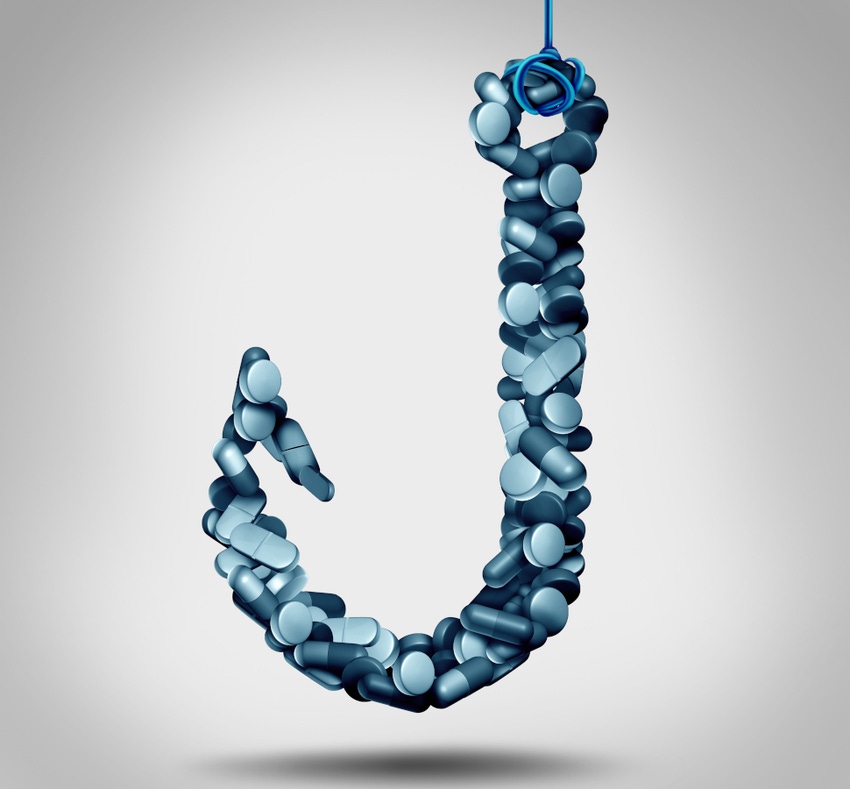
Pharmaceutical packaging, in the form of packs that control access to opioids, has been in the limelight recently, with recently enacted legislation driving regulatory changes in the United States.
With an eye on the new legislation and the U.S. opioid crisis more generally, packaging manufacturers and pharmaceutical companies have designed packages that limit opioid prescriptions to the amount medically indicated for the patient—and that also thwart theft.
With the ongoing opioid crisis continuing to destroy lives, these packaging efforts are timely. The Centers for Disease Control and Prevention report that 115 Americans, on average, die each day from an opioid overdose.
The passage into law of the Substance Use-Disorder Prevention that Promotes Opioid Recovery and Treatment (SUPPORT) for Patients and Communities Act, in October 2018, granted the Food and Drug Administration the authority to address the opioid crisis in several ways, including via packaging.
In a statement released soon after the bipartisan legislation was enacted, FDA Commissioner Scott Gottlieb, M.D., said the new law will allow “the FDA to require certain packaging, such as unit dose blister packs, for opioids and other drugs that pose a risk of abuse or overdose. The convenience of this kind of packaging could encourage prescribers to opt for shorter durations of use, thereby limiting the number of opioids dispensed to patients.”
For example, a blister pack for opioids could be configured to hold seven days’ worth of medication rather than a month’s worth. The idea is to reduce the volume of opioids in circulation, thereby limiting new addictions and drug diversion.
As a related benefit, fewer leftover opioids would be stashed in bathroom cabinets and drawers, where children or others could find them. In another effort to reduce over-distribution, the new legislation allows the FDA to require that opioids be dispensed with a safe-disposal option, such as a mail-back pouch.
Drug manufacturers and packaging suppliers have gotten creative in designing packages that help prevent misusing or stealing the product. Here are three recent innovations:
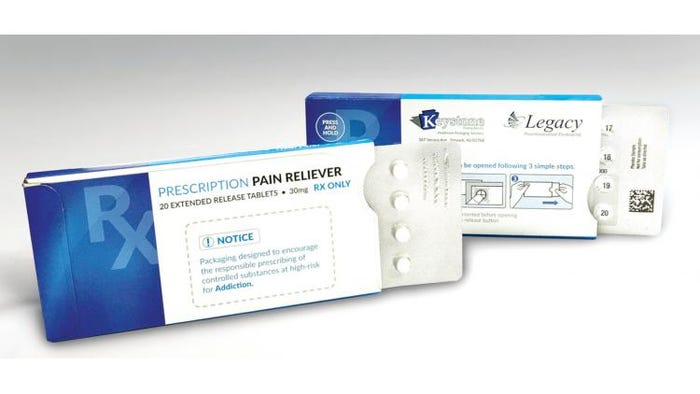
1. Blister-pack solution
One package format that conforms with the new legislation isa limited-dose version of the Ecoslide-RX blister package from Keystone Folding Box Co. The package, which can be configured for one to 30 tablets, visually organizes medication in a daily-calendar format. The patient can see every dose, so if a dose were to be surreptitiously removed, it would be obvious to the patient.
Significantly, the Ecoslide-RX pack is both child-resistant (CR) and senior-friendly. “Several iterations of the package were created and tested with both children and seniors until we struck the right balance—specifically, too difficult for children to open, but easy enough for seniors to unlock the locking feature,” says Ward Smith, director of marketing and business development at Keystone.
To work the reclosable locking feature on the blister pack, “the patient has to depress a button that allows the blister to slide forward, so doses can be accessed,” Smith says. “When the blister card is slid back inside the carton, it locks in place.” And “very little instruction is needed. What’s isn’t intuitive is plainly described in easy-to-follow directions” that are printed in three simple steps, as an illustration.
For patients with dexterity issues, Keystone has designed a small plastic clip that pharmacists can add to the pack to disable the CR function.
From an operations perspective, this package is “cost-effective for high-volume, high-speed automation,” says Brad Rayner, vp, sales and marketing, at contract packager Legacy Pharmaceutical Packaging.
Legacy has been filling the non-opioid Ecoslide-RX pack for more than seven years and is currently in discussions with pharmaceutical companies that “are looking at this as an option” for opioids, Rayner says. Legacy’s St. Louis plant runs five high-speed blister lines equipped with PharmaWorks blister machinery.
NEXT: Single-dose applicator
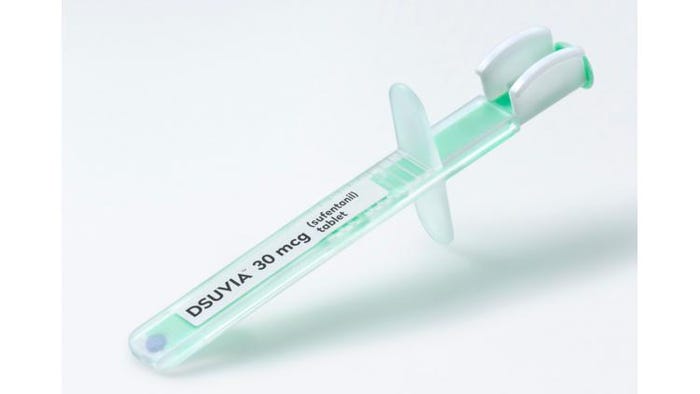
2. Single-dose applicator
For a high-strength opioid painkiller called Dsuvia, which the FDA recently approved, single-dose packaging was required. AcelRx Pharmaceuticals Inc. manufactures Dsuvia, which is a more potent version of fentanyl. The sublingual drug is not intended for home use, and patients are supposed to use it for 72 hours, maximum.
The FDA approved the drug for use in medically supervised healthcare settings like hospitals and emergency rooms and potentially for battlefield treatment of U.S. soldiers. Restricting where and how long Dsuvia is administered and the single-dose applicator are all geared to preventing improper use and diversion of the drug.
Each filled Dsuvia applicator contains only one tablet; healthcare providers use the applicator to deposit the tablet under the patient’s tongue. A plunger inside the disposable applicator pushes the tablet out. A removable lock on the applicator prevents unintended dispensing.
The body of the applicator is transparent, so a visual check shows when the tablet has been dispensed. The plunger is nonretractable, making it impossible to refill a used applicator with some other substance. Each filled applicator is packed in a sealed, tamper-evident pouch with fold-out directions for use.
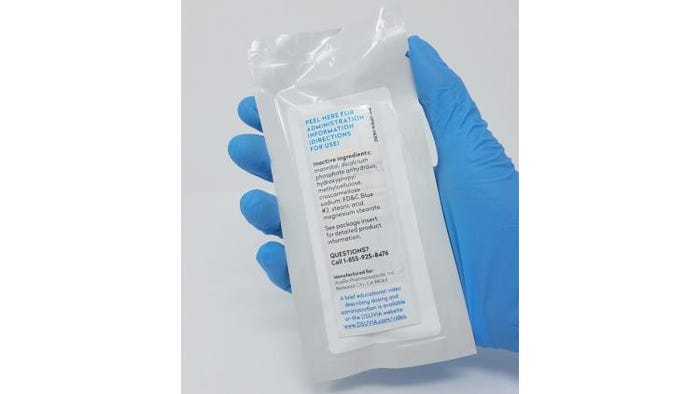
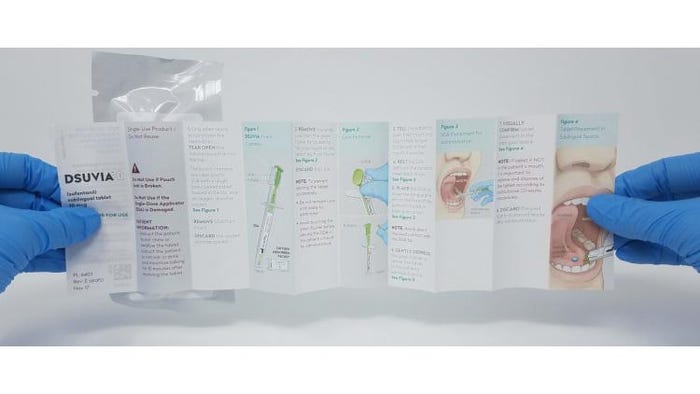
NEXT: Opioids administered as liquids
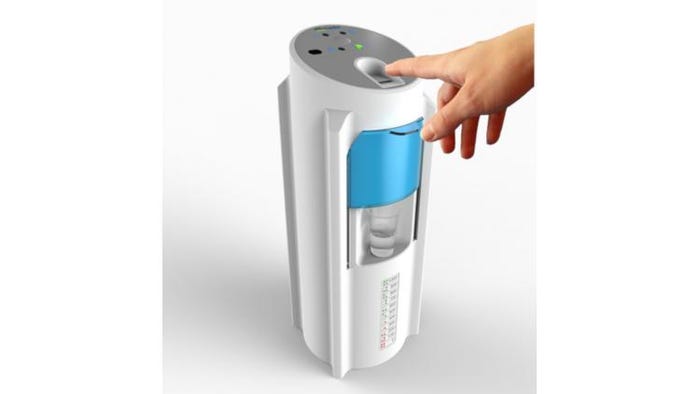
3. Opioids administered as liquids
To provide better control over liquid opioids, Swiss-based Ethimedix has developed the SmartBottle. The device uses biometric technology—fingerprint recognition—to ensure that only qualified healthcare providers can dispense opioid medication from the SmartBottle in hospital mode. In a future outpatient mode, only the authorized patient can receive his or her medication dose within the constraints of the prescription embedded in the device’s chip.
The medication is contained in a tamper-proof cartridge that fits into the SmartBottle, and the patient’s prescriptions is programmed into the device. In addition, the fingerprints of one or multiple healthcare providers can be recorded in the device. If an individual with unrecognized fingerprints tries to dispense a programmed dose of the medication, the SmartBottle will not deliver any dose. If someone tries to tamper with the device, the SmartBottle neutralizes the opioid.
The SmartBottle may ultimately be available for home use, but for now Ethimedix is testing it at Bicêtre Hospital in Paris. “The ability to access pain relief when necessary, without delay and without the current risks of theft and abuse or misuse, clearly constitutes a benefit to the patient and caregiver communities,” says Isabelle Nègre, M.D., anesthesiologist at Bicêtre Hospital and head of the Pain Relief Commission for Hôpitaux Universitaires Paris Sud.
She adds, “In our hospital setting, it provides significant time savings to our healthcare providers, who can dispense the pain relief right when the patient needs it, as they do their rounds, without having to interrupt the rounds to get the restricted tablet of opioid from the locked cabinet. Additionally, the SmartBottle sits on their cart 24/7, without risk of illegal access or theft, since the neutralization function will be immediate in case of tampering.”
Also read “SmartBottle safely dispenses and tracks opioids” for exclusive details about the SmartBottle from Leila Smith, scientific and business consultant for Ethimedix, as well as further comments from Dr. Nègre.
********************************************************************************
In addition to leading suppliers showing the latest solutions in labeling, automation, food packaging, package design and more—WestPack 2019 (Feb. 5-7; Anaheim, CA) gives you access to the industry's leading educational offerings with the 3D Printing and Smart Manufacturing Innovations Summits, the MD&M Medtech Conference and free industry education at the Expo. Register to attend today!
About the Author(s)
You May Also Like




